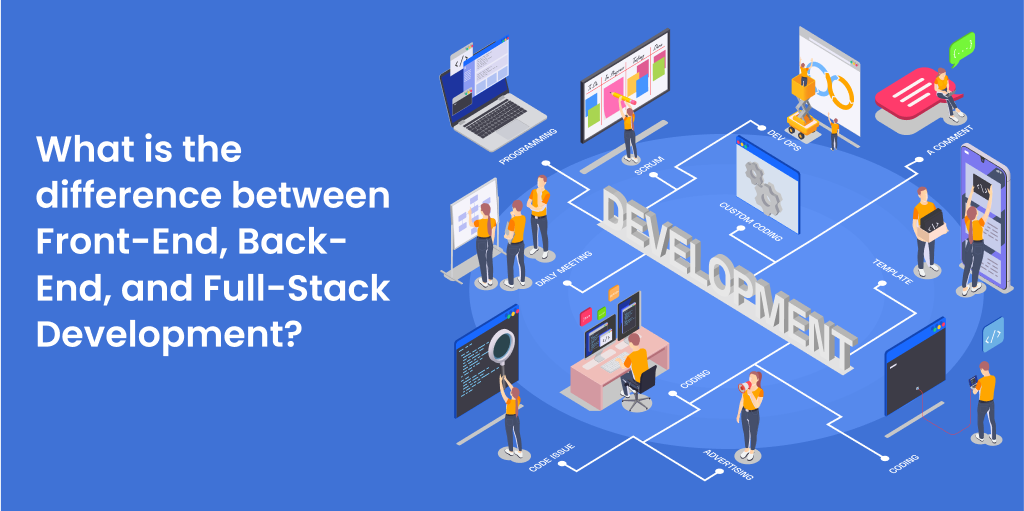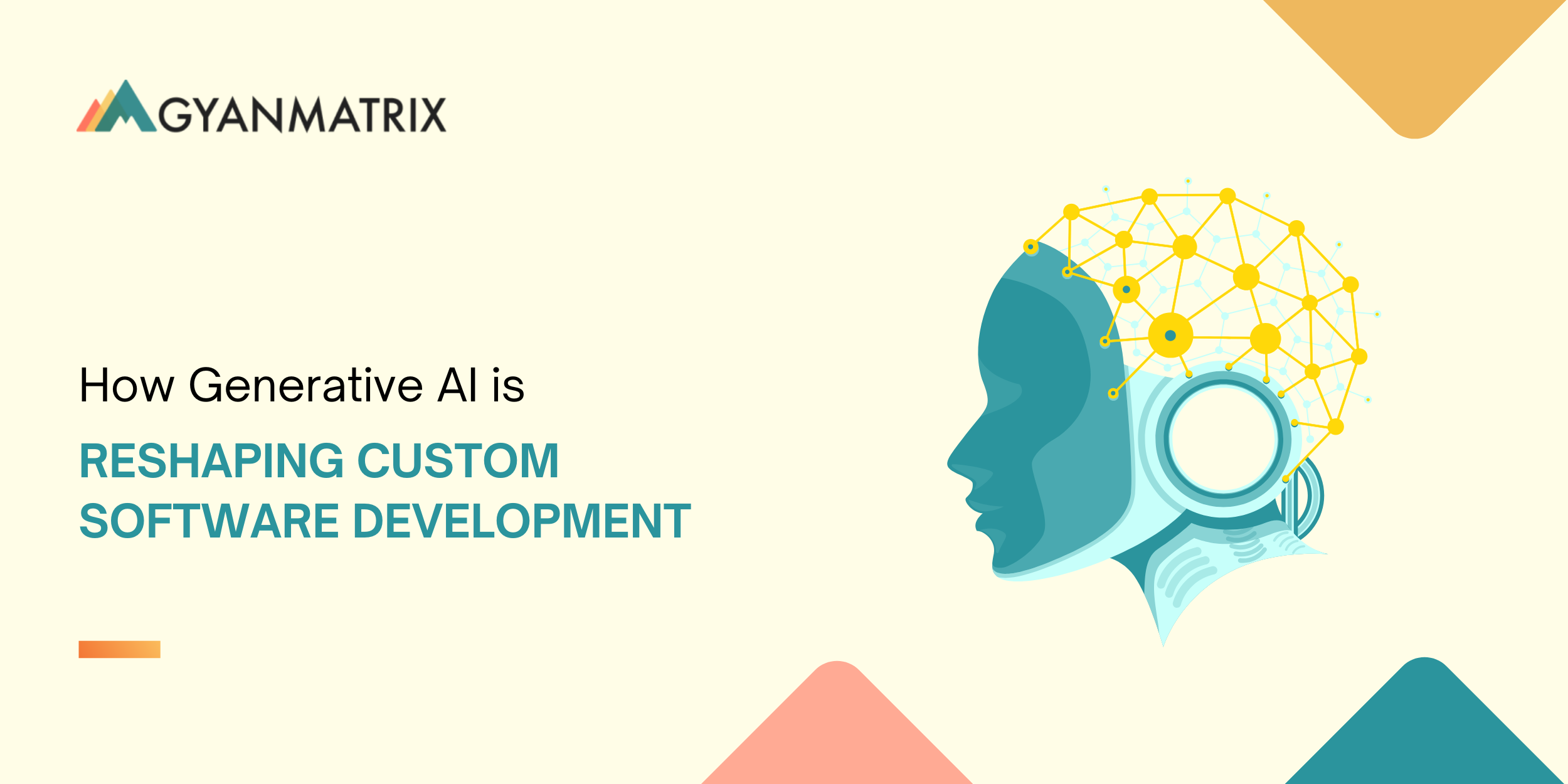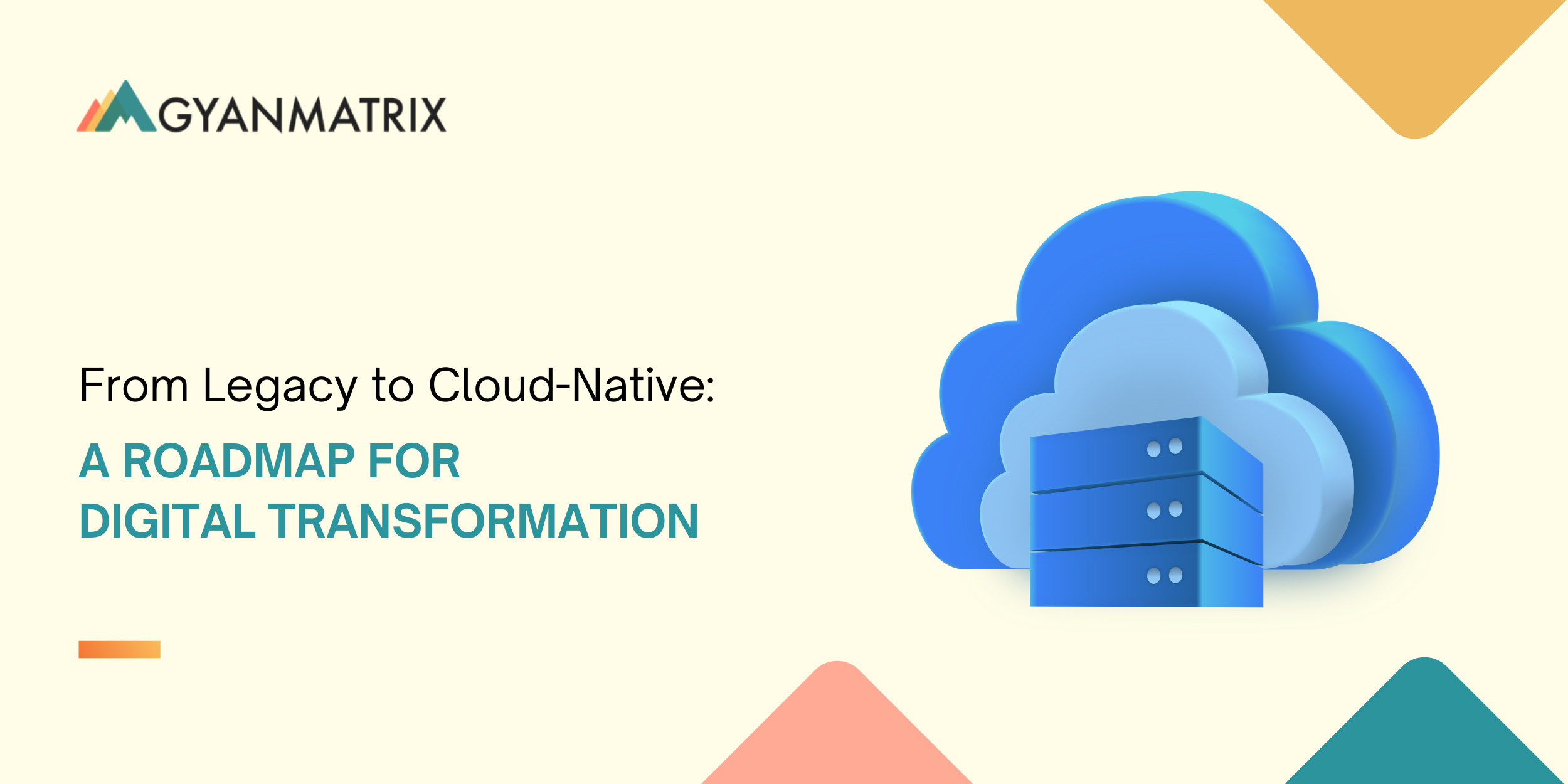What is the difference between Front-End, Back-End, and Full-Stack Development?
Front-end, back-end, and full-stack development are three types of web development that differ in their focus and skills.
Front-end development is about creating the user interface of a website or application, using languages like HTML, CSS, and JavaScript. Front-end developers make sure that the website looks good, works well, and is responsive on different devices and browsers.
Back-end development is about building the server-side logic and functionality of a website or application, using languages like PHP, Ruby, Python, Java, and others. Back-end developers handle data storage, security, authentication, and communication with other services and APIs.
Full-stack development is about being able to work on both the front-end and the back-end of a website or application, using a combination of languages and frameworks. Full-stack developers have a broad range of skills and can handle the entire development process from start to finish.
In this blog post, we will explore the differences and similarities between these three types of web development, and help you decide which one is best for you.
Front-End Development
Some of the main responsibilities of front-end developers are:
• Designing and developing user interfaces using HTML, CSS, and JavaScript.
• Ensuring cross-browser compatibility and responsiveness of websites and applications.
• Optimizing performance and user experience.
• Collaborating with designers and back-end developers to deliver functional and appealing web products.
• Problem-solving and troubleshooting issues with code and design.
• Staying updated with the latest trends and technologies in front-end development.
• Front-end developers play a vital role in creating engaging and interactive web experiences for users. They need to have a combination of technical skills, creativity, and attention to detail.
Technologies and Tools
HTML, CSS, and JavaScript are the core technologies for front-end development. They are used to create the structure, style, and interactivity of web pages and applications.
Front-end frameworks are tools that provide a standard way of writing and organizing code, as well as additional features and functionalities. Some of the most popular front-end frameworks are:
• React: A JavaScript library for building user interfaces using components and state management.
• Angular: A TypeScript-based framework for developing single-page applications using modules and directives.
• Vue.js: A progressive framework for building reactive and dynamic user interfaces using templates and data binding.
Back-End Development
Some of the main responsibilities of back-end developers are:
• Developing and maintaining server-side applications, databases, and APIs using various languages and frameworks.
• Ensuring data security, integrity, and scalability.
• Integrating data from different sources and systems.
• Testing and debugging back-end code and functionality.
• Collaborating with front-end developers and other stakeholders to deliver web products that meet user needs and expectations.
Back-end developers play a crucial role in creating the logic and functionality that power websites and applications. They need to have a strong knowledge of web technologies and architectures, as well as problem-solving and communication skills.
Technologies and Tools
Server-side languages are the programming languages that run on the server and handle the backend logic and functionality of web applications. Some of the most popular server-side languages are:
• Python: A high-level, interpreted, and general-purpose language that is known for its readability, simplicity, and versatility. Python has a rich set of libraries and frameworks, such as Django, Flask, and Pyramid, that facilitate web development.
• Ruby: A dynamic, expressive, and object-oriented language that is designed to make programming fun and productive. Ruby has a powerful web framework called Ruby on Rails, which enables rapid and convention-based development.
• Java: A compiled, strongly typed, and platform-independent language that is widely used for enterprise-scale web applications. Java has a robust and mature ecosystem of tools and frameworks, such as Spring Boot, Hibernate, and Struts, that support web development.
• Database systems are the software that store, manage, and manipulate data for web applications.
There are two main types of database systems: relational and nonrelational. Some of the most common database systems are:
• MySQL: A relational database system that uses the SQL language to query and manipulate data. MySQL is open-source, reliable, and scalable, and is widely used for web applications that need structured and consistent data.
• MongoDB: A nonrelational database system that uses JSON-like documents to store and retrieve data. MongoDB is flexible, fast, and scalable, and is suitable for web applications that need dynamic and heterogeneous data.
Full-Stack Development
Full-stack development is about being able to work on both the front-end and the back-end of a web application, using a combination of languages and frameworks. Full-stack developers have a broad range of skills and can handle the entire web development process from start to finish.
The web development process consists of several steps, such as planning, design, development, testing, deployment, and maintenance. Each step involves different tasks and challenges that require full-stack developers to be versatile and adaptable.
Skills Required for Full-Stack Development
Some of the skills required for full-stack development are:
• Proficiency in both front-end and back-end technologies: Full-stack developers need to be familiar with the languages, frameworks, and tools used for both the client-side and the server-side of web applications. For example, they should know HTML, CSS, and JavaScript for the front-end, and Python, Ruby, or Java for the back-end.
• Problem-solving and troubleshooting abilities: Full-stack developers need to be able to identify, analyze, and solve problems that arise in the web development process. They also need to be able to debug and test their code and fix any errors or bugs that occur.
Contact the best website development company to choose the development skill that best compliments your project. Give us a call today.
Cybersecurity in 2025: Strategies for Staying Ahead of AI-Powered Threats
In 2025, the cybersecurity landscape is more complex than ever. The rise of AI-powered ...
How Generative AI is Reshaping Custom Software Development
Generative AI has moved beyond the hype and is now becoming a transformational force in ...
From Legacy to Cloud-Native: A Roadmap for Digital Transformation
In today’s hyper-competitive digital world, businesses cannot afford to be slowed down by rigid, outdated ...
AI‑Powered Personalization in Custom Apps: Real‑World Use Cases for 2025
In today’s fast-moving digital landscape, personalization is no longer a luxury—it’s a user expectation. ...
Agentic AI: Empowering the Next Generation of Smart Enterprises
In today’s rapidly evolving digital world, organizations are no longer just competing on products or ...
Latest Trends Followed by Mobile App Development Companies in 2025
Introduction The mobile app development industry is evolving at lightning speed, driven by user demands, ...








